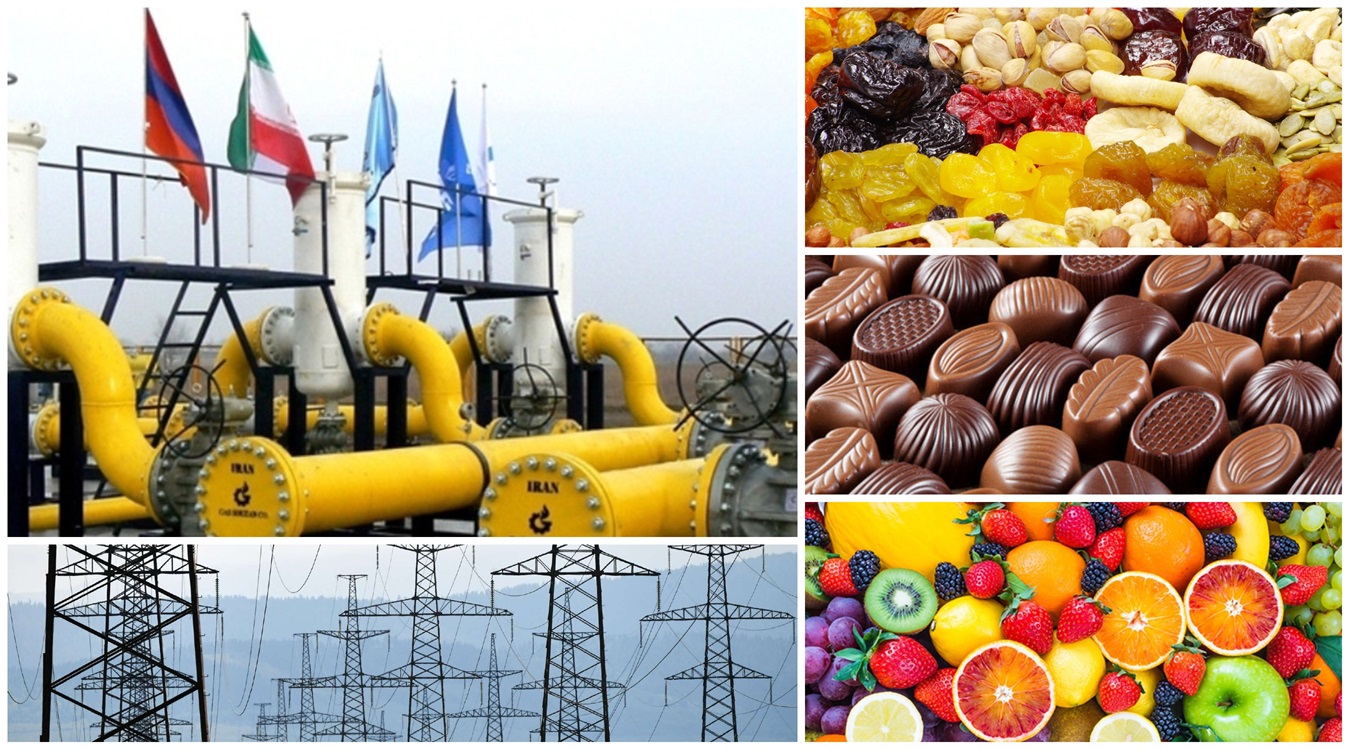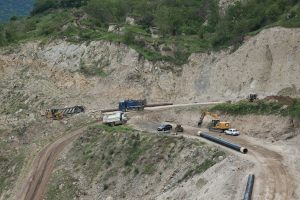After the signing of the temporary agreement on preferential trade between Iran and EAEU, the trade turnover between Armenia and Iran increased significantly, but the interests of Armenia were not satisfied by that agreement as much as the interests of Russia and Kazakhstan.
In 2018, following extensive negotiations, a temporary agreement on preferential trade was formalized between the Eurasian Economic Union (EAEU) and Iran. This accord entails reduced customs duties for the import of numerous products from Iran to the EAEU, as well as in case of exports from the EAEU to Iran.
Effective from October 27, 2019, the agreement set the stage for expectations and an initial arrangement that, come October 2022, upon the expiration of the temporary agreement, the permanent agreement will be signed. But as of the beginning of December 2023, the new agreement has not been signed yet and instead, the term of the temporary agreement has been prolonged.
In maintaining a closed economy and adhering to the principles of a resistance economy, Iran has traditionally approached collaborations with other states or economic alliances with caution. This country’s emphasis lies not only on importation but also on being a significant exporter. Iran assumes the role of a primary exporter when engaging with four of the EAEU member states, namely Armenia, Belarus, Kazakhstan, and Kyrgyzstan.
A notable exception is observed in the case of Russia, where Iran predominantly functions as an importer. Furthermore, the substantial volume of trade between Iran and Russia significantly influences the overall trade indicators between the EAEU and Iran.
In any instance, collaboration with the EAEU holds significance for Iran due to the following reasons:
- Directing our focus to the East, Iran faces limitations in its collaboration with the West due to sanctions and this country is actively strengthening relationships with its neighboring and regional states. Hence, the EAEU stands out as an important channel, providing Iran with the opportunity to delve into new markets, strengthen its position in existing ones, and implement imports on more favorable terms.
- Similarly, through its collaboration with the EAEU, Iran underscores its integration into the international sphere, seizing an opportunity to enhance its standing in the international arena․
The Iranian economic-focused website, Tahlilbazar, asserts that accession to the EAEU will streamline Iran’s integration into the global market, promoting enhanced competitiveness and predictability within its economy.
Significantly, following the 2020 war in Artsakh, Iran opposes the “Zangezur Corridor” project advocated by Azerbaijan and Turkey. The rationale behind Iran’s opposition lies in the perceived threat the corridor poses to the integrity of the Armenian-Iranian border, which represents the sole land communication route with the EAEU. In this context, Armenia stands as a crucial gateway for Iran’s access to the EAEU.
Despite the significance of Armenia, practical trade interactions between Iran and the EAEU, particularly with Russia, predominantly occur through the territory of Azerbaijan. The cause is that the western section of the “North-South” trade corridor passes through Azerbaijan’s roadways. Currently, this corridor operates in a multimodal mode.
- Cargo is efficiently transported from Iran’s Bandar-Abbas port to Rasht via rail.
- Subsequently, the cargo is conveyed by trucks to Astara, situated on the Azerbaijan border.
- Upon reaching Astara, the cargo is transferred back to the railway, continuing its journey to Russia.
As per Russian railways’ data, a notable 4 million tons of cargo were transported through the “North-South” trade corridor in the initial five months of 2023, of which 3.6 tons were conveyed through the mentioned Azerbaijani route. This calculation encompasses a substantial portion of the EAEU-Iran trade.
Notably, the transit indicators of Azerbaijan remained unchanged even during the times of tension in relations, including those following the 2020 Artsakh war and the attack on the Azerbaijani embassy in Tehran.
The notable increase in trade volumes are attributed, in part, to the large-scale conflict initiated by Russia against Ukraine. Faced with limitations imposed by Western sanctions affecting traditional communication channels, Russia has redirected its attention to the South and East. Against this backdrop, Iran has gained significance for Russia, serving not only as an export market but also as a crucial transit country.
In response to these dynamics, Moscow has signaled its willingness to finance the construction of the Rasht-Astara railway. Once realized, this project would prevent the need for a multimodal cargo transportation system from Iran to Russia, as the entire route would smoothly transit to railway transport. Although Russia and Iran have formalized an agreement on this matter, the commencement of construction for this railway section is still pending.
Which side benefited from the EAEU-Iran agreement?
As of 2016, three years preceding the accord’s signing, the trade turnover between Iran and the EAEU amounted to 3 billion dollars. Remarkably, by the third year following the agreement’s signing, in 2021, this figure surpassed the 5 billion-dollar mark.
Out of this total, $4 billion is allocated to trade between Iran and Russia, with the remaining portion falling into trade between Iran and the other four EAEU member states. Notably, concerning Russia, the trade balance favors Russia, while the other four EAEU countries have higher imports than exports from Iran.
One aspect contributing to this is the singularity of Iran, wherein its economy, during the period of sanctions, gradually became more secluded from the international community. Nonetheless, certain products continue to reach the Iranian market. Remarkably, in the context of Russian exports to Iran, radar equipment, grain, and oils are prominent. Similarly, the trade between Kazakhstan and Iran involves products within the realm of black metals. In the case of Armenia-Iran trade, electricity stands out as a significant product.
The temporary agreement of 2019 presented that the involved parties, namely the EAEU and Iran, established preferential and diminished customs rates for numerous goods traded between Iran and the EAEU. The preferential list for exports from the EAEU to Iran encompassed 360 distinct products, while for imports from Iran to the EAEU featured 502 products.
Regarding exports from the EAEU to Iran, in 2016, the export of goods with preferential interest rates was notably lower than that of goods with normal interest rates. However, a transformative shift has occurred over the subsequent years, with preferential products significantly dominating the trade in 2019. (In 2020-2021, Russia did not provide a classification of goods, making it challenging to precisely ascertain the ratio during those specific years).
Indeed, the intricate dynamics between cause and effect in this context resemble the age-old chicken-and-egg paradox. On one hand, the act of including these products in the preferential lists has the potential to stimulate their export. On the other hand, the increase in the prominence of these products within the export portfolio could, in turn, have influence on the negotiating parties, stimulating them to incorporate these products into the lists. A similar challenge may manifest in case of imports from Iran to the EAEU.
Importations from Iran to Russia encompass a variety of products, notably fruits, vegetables, dried fruits, raisins, and the like. The graphical representation underscores that products carrying the most substantial weight are systematically incorporated into the list eligible for preferential customs interest rates.
Armenia secures the second position in terms of imports. Within the imports from Iran to Armenia, natural gas has its imposing weight, constituting a noteworthy 10.2 percent of the entire import in 2022. What is particularly noteworthy is that this product, natural gas, is not included within the list of goods entitled to preferential customs rates. Among the items listed, it’s important to highlight that oil products (without specific details) made up the largest part of imports. In that particular year, this portion represented about 8 percent of the overall total.
Similarly, the preferential list does not encompass electricity, a consistent primary product in Armenia’s exports to Iran, constituting 60 percent of the total exports in 2022. Furthermore, within the set of preferential products, chocolate emerged as the largest product to exports, with a share of only 0.9 percent in the same year.
It is noteworthy to mention that natural gas and electricity, which stand as the foremost products in both imports and exports, are integral components of the Armenian-Iranian “Gas for Electricity” agreement.
What did Armenia get from the EAEU-Iran deal?
Armenia is the only country in the EAEU sharing a land border with Iran. This prompts an inquiry into whether Armenia has any advantages in its trade relations with Iran, particularly when considering preferential trade terms as outlined in the temporary agreement.
Significantly, in case of imports, the influence of Armenia-Iran trade on growth has been substantial. In the period 2-3 years prior to the accord’s initiation, specifically in 2016, bilateral trade reached an approximate value of 230 million dollars. Notably, nearly 70 percent of this trade volume constituted imports by Armenia from Iran. However, it is pertinent to observe that a mere 12.3 percent of these imports were from the groups of products subsequently incorporated into the preferential list.
In the year 2022, the bilateral trade volume between the two nations reached approximately 710 million dollars, with imports to Armenia constituting 84 percent of this total. However, within this import structure, the proportion of privileged goods reached 25.3 percent.
Nevertheless, even without undertaking a specific calculation, it is evident that the share of preferential products in Armenia’s import composition is comparatively smaller than, for instance, the scenarios observed in Russia and Kazakhstan (It is crucial to remember that data for the year 2022 is not available for Russia and Belarus, and the information for the years 2020-2021 does not encompass the products gap.
This issue becomes more conspicuous within the export portfolio. Contrasting with Russia and Kazakhstan, where over half of the exports fall under the categories of goods cleared at a preferential rate, Armenia’s export dynamics differ. Given that electricity holds the predominant share in Armenia’s exports, the balance tilts in favor of goods subject to standard interest rates.
In 2016, approximately 16 percent of Armenia’s export structure to Iran comprised product groups that were subsequently incorporated into the list of items eligible for preferential interest rates. However, by 2022, this percentage decreased significantly, accounting for only 2.4 percent of total exports. including mostly chocolate and related products.
It is obvious that in the case of imports, the proportion of goods having preferential interest rates has doubled among the items arriving in Armenia, resulting in a cost reduction for the end consumer.
However, the export of goods with preferential interest rates has reached a negligible level. This indicates that Armenian entrepreneurs, for various reasons, are not able to take advantage of the opportunity to export more affordably to the substantial market of Iran. Furthermore, it implies that the fulfillment of Armenia’s interests may not be commensurate with the satisfaction of the interests of Russia and Kazakhstan.
by Garik Harutyunyan and Zhanna Vardanyan
© All the stories, infographics and other visuals bearing the Ampop Media logo is possible to publish on other audiovisual platforms only in case of an agreement reached with Ampop Media and/or JFF.
Փորձագետի կարծիք
First Published: 04/12/2023









